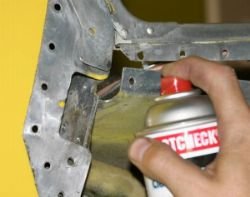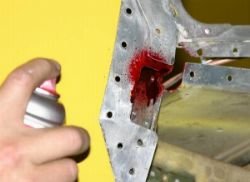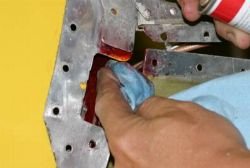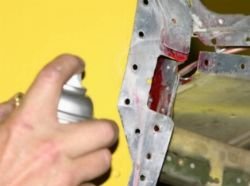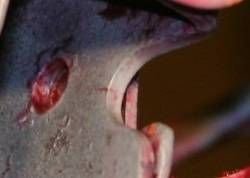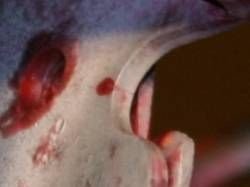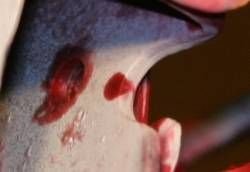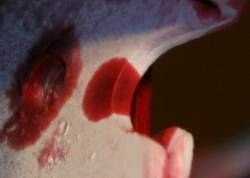I bought some dye penetrant to test for
cracks in my axles and landing gear legs during the May '04
annual (Update: It is now Mid-August and the plane is still "in annual"!).
Since I hadn't used it before, (and didn't
have any idea what I was doing), I thought I'd practice on one of the
doorpost cracks that I'd found during the annual. It's a
three-part system; cleaner, penetrant (dye), and developer.
Here are some pictures of the stuff in action, in case anyone is
curious about what it looks like. The techniques shown below may
not be optimum, since it was the first time I'd done this, so if you're
testing anything critical, find someone who knows what they're doing :-)
